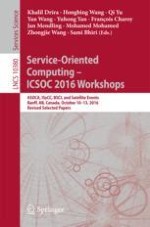2017 | Book
Service-Oriented Computing – ICSOC 2016 Workshops
ASOCA, ISyCC, BSCI, and Satellite Events, Banff, AB, Canada, October 10–13, 2016, Revised Selected Papers
Editors: Khalil Drira, Hongbing Wang, Qi Yu, Yan Wang, Yuhong Yan, François Charoy, Jan Mendling, Mohamed Mohamed, Zhongjie Wang, Sami Bhiri
Publisher: Springer International Publishing
Book Series : Lecture Notes in Computer Science
